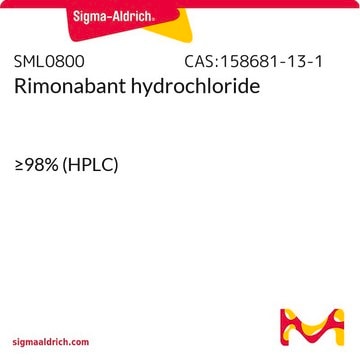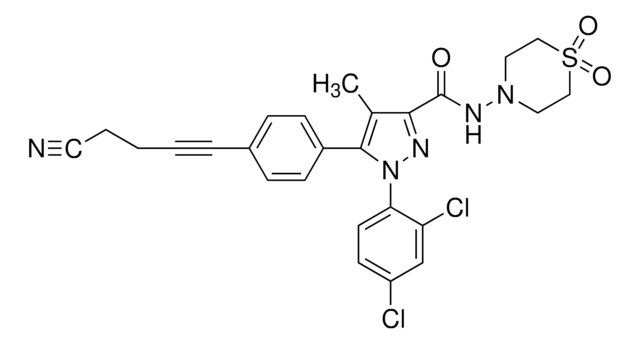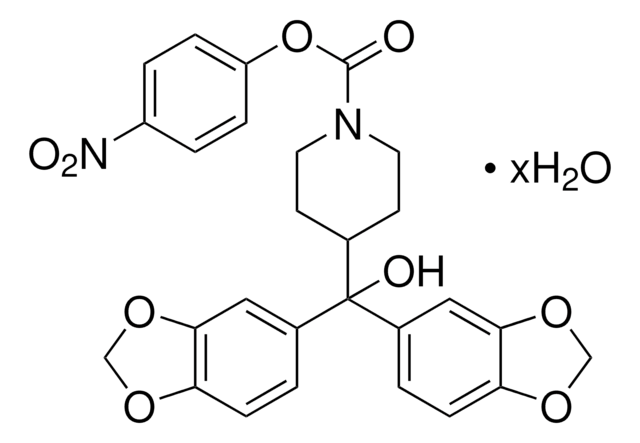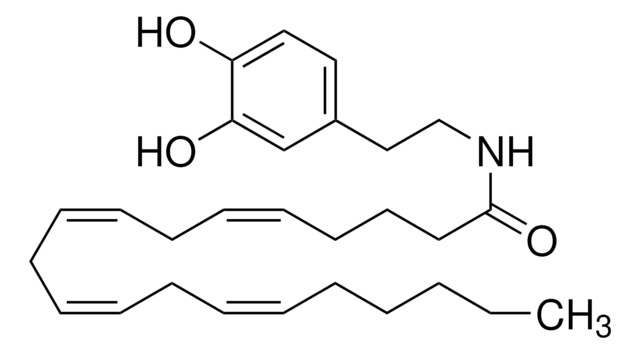おすすめの製品
product name
AM251, >98% (HPLC), solid
品質水準
アッセイ
>98% (HPLC)
形状
solid
色
white
溶解性
DMSO: >10 mg/mL
H2O: insoluble
オーガナイザー
Sanofi Aventis
SMILES記法
Cc1c(nn(-c2ccc(Cl)cc2Cl)c1-c3ccc(I)cc3)C(=O)NN4CCCCC4
InChI
1S/C22H21Cl2IN4O/c1-14-20(22(30)27-28-11-3-2-4-12-28)26-29(19-10-7-16(23)13-18(19)24)21(14)15-5-8-17(25)9-6-15/h5-10,13H,2-4,11-12H2,1H3,(H,27,30)
InChI Key
BUZAJRPLUGXRAB-UHFFFAOYSA-N
遺伝子情報
mouse ... Cnr1(12801) , Cnr2(12802)
rat ... Cnr1(25248)
アプリケーション
生物化学的/生理学的作用
特徴および利点
その他情報
危険有害性情報
注意書き
危険有害性の分類
Aquatic Chronic 4
保管分類コード
11 - Combustible Solids
WGK
WGK 3
引火点(°F)
Not applicable
引火点(℃)
Not applicable
個人用保護具 (PPE)
dust mask type N95 (US), Eyeshields, Gloves
適用法令
試験研究用途を考慮した関連法令を主に挙げております。化学物質以外については、一部の情報のみ提供しています。 製品を安全かつ合法的に使用することは、使用者の義務です。最新情報により修正される場合があります。WEBの反映には時間を要することがあるため、適宜SDSをご参照ください。
労働安全衛生法名称等を表示すべき危険物及び有害物
名称等を表示すべき危険物及び有害物
労働安全衛生法名称等を通知すべき危険物及び有害物
名称等を通知すべき危険物及び有害物
Jan Code
A6226-BULK-CR:
A6226-IP:
A6226-50MG:4548173990279
A6226-VAR:
A6226-10MG:4548173990262
A6226-BULK:
試験成績書(COA)
製品のロット番号・バッチ番号を入力して、試験成績書(COA) を検索できます。ロット番号・バッチ番号は、製品ラベルに「Lot」または「Batch」に続いて記載されています。
この製品を見ている人はこちらもチェック
ライフサイエンス、有機合成、材料科学、クロマトグラフィー、分析など、あらゆる分野の研究に経験のあるメンバーがおります。.
製品に関するお問い合わせはこちら(テクニカルサービス)











